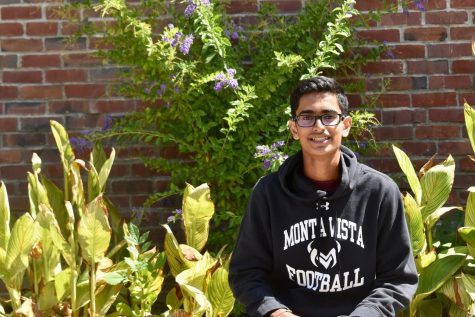Only ears
Why podcasts have become a staple source of entertainment for the MVHS community
September 28, 2019
As technology continues to advance, more platforms of entertainment have emerged and replaced older forms. Podcasts, which have been present since the late 2000s, are a popular form of entertainment. According to the New York Times, 40% of people between the ages of 12 and 24 have listened to a podcast every month in 2019, and around 20 million people in the United States have tuned into at least one podcast in their life.
Senior Julian Kim equates this growth in popularity to the easy consumption of each episode. With thean average run time of 30 to 60 minutes, podcasts require less attention compared to other sources of entertainment.
“Podcasts are a lot nicer when you’re trying to drive or you’re about to sleep,” Kim said. “In the same places where you listen to music, you can listen to podcasts. If you’re doing homework or you’re doing something like cooking or something, it’s a lot easier to listen to podcasts than [look] at the video.”
Kim explains that listening to podcasts is similar to tuning into the radio — both are audible platforms with the host narrating the story. However, Kim says that podcasts allow listeners to have more freedom over the content they engage with.
“When people listen to the radio, it’s all determined by the radio broadcasters,” Kim said. “But with podcasts, it’s basically choosing exactly what you want. ”
English teacher David Clarke agrees with Kim, and says that when he was growing up, people would schedule their days around certain air-times in order to tune into their favorite radio shows.
“There were three national channels: ABC, NBC and CBS and you get a couple of [local radio stations] too,” Clarke said. “Also, when radio shows would switch over from one DJ slot to the next, they’ll have these sort of conversations, and those are some of the most entertaining things to listen to.”
According to Clarke, there are various types of storytelling podcast hosts use various types of storytelling. One commonly used form is known as a panel, where one or more persons, hosts or guests focus the show on a topic of discussion. Another form is a narrative piece where the host can tell a long form story from their past, as if it’s an essay or speech. The last form is an audio story, where the host simply gets sources and is telling a straight news story about a topic, similar to stations like NPR.
Clarke encourages students to listen to podcasts because he believes they help students “see the words” concerning certain topics. “This American Life” is an example of a podcast and /radio show that tells long form stories and corresponds with the material in the AP Literature class. Personally, Clarke listens to podcasts of all types, but prefers the panel because of its conversational tone.
“It’s a particular form of interpersonal dynamic that’s going on,” Clarke said. “I like those because it’s a pretty free form sort of medium, and they’ll have a particular subject that they’re talking about. It’s an interesting way of learning about something and in a second hand sort of way.”
According to social studies teacher Scott Victorine, podcasts have the ability to target a niche market because they can be extremely specific. For example, Victorine, an avid Minnesota Vikings fan, keepsis able to keep up with important information about his team by listening to podcasts from the Minneapolis Star Tribune.
Victorine says that the ability for podcasts to be spread to a large market through platforms like Spotify or Apple’s Podcasts application is a large contributor to their success. This accessibility is something that he believes will allow the entertainment platform to survive in the long run.
“I know people who are a generation older than me that are listening to podcasts as well,” Victorine said. “I think that storytelling is something that no matter what culture we’re from, or what time period were from, it’s always been around. It will definitely, definitely be around for a while.”

















